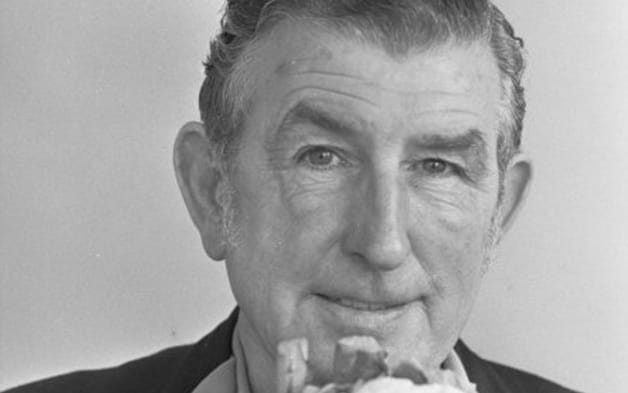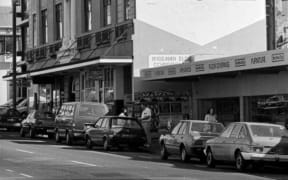Detectives re-examining the 1984 Wellington Trades Hall Bombing have been collecting DNA samples from suspects.

Caretaker and unionist Ernie Abbott was killed almost instantly when he picked up the suitcase containing the bomb. Photo: EVENING POST
Caretaker and unionist Ernie Abbott was killed almost instantly when he picked up the suitcase containing the bomb.
The police have always struggled to pinpoint a motive for the bombing and numerous investigations over the years have failed to find the person responsible.
But the cold case has been reopened and the police have recently revealed more details about the bomb's components - including that it was wrapped in a 1977 edition of The Evening Post.

Newspaper and fragments from the scene were identified as coming from a 1977 edition of the Evening Post. Photo: Supplied / NZ Police
Police have also been collecting DNA samples from suspects.
What happened?
On Tuesday, 27 March, 1984, Wellington Trades Hall caretaker Mr Abbott was locking up for the day.
At 5.19pm he picked up a suitcase which had been left unattended for several hours. The movement triggered a bomb and Mr Abbott was killed almost instantly.
Police believe the explosive was equivalent to three sticks of gelignite. The force of the explosion was considerable and required a detailed scene examination.
Mr Abbott was the sole victim of the attack and despite numerous investigations, police have always struggled to identify a motive for the bombing.
Former secretary of the Federation of Labour (FOL) Ken Douglas said he was having a meeting with the Labour Party around the corner at the time, which he believed was the real target for the attack.
He said the bomb was planted to coincide the meeting between the political and industrial arms of the Labour Party after it was reported in The Dominion Post, however the newspaper did not say the meeting would take place at a separate site - Luke's Lane.
"I think the bomb was planted against the union movement and against the Labour Party," Mr Douglas said.
"My views are formed, I suppose, by the politics of the time. We had had quite intense anti-union activity by the Muldoon government and that was ongoing."
He said although the police investigation was not inherently flawed, it cast a too wide net instead of focussing on evidence that appeared to be directly related to the case.
"About three or four months after the event I was given some information about a person that had been … sent to New Zealand as a consequence of a safe haven.
"That person had had a mental breakdown; he was an intelligence officer working for the IR5 in the IRA."
After the bombing that man flew to Perth.
The FOL passed on the information to police.
"I was surprised that they never followed up and I was surprised that they never came back and asked us."
Similarly, he said police did not investigate the fact there were only two people in New Zealand at the time who could make the timing device used in the explosive.
The attack was only the second political murder in the country's history at the time, therefore it would be "something of a misnomer for it to be determined a cold case".
Why are police reviewing the case?
Police have revealed details of the suitcase bomb's components and its construction in the hope it will jog someone's memory.
One relatively uncommon component, a mercury switch, was part of the device. When Mr Abbott moved the suitcase the mercury tipped, connecting the circuit and detonating the bomb.
The bomber set a 60 minute stove timer, which gave sufficient time for the bomber to take the device to the Trades Hall and deposit it.
Police believe there were two bottles of accelerant in the suitcase. One was a popular Teal brand soft drink bottle containing petrol and one was sealed with an Asti Riccadonna cork.
The forensic profile of the bomber prepared in 1984, described the offender as a loner, possibly a hoarder who had difficulty maintaining relationships, was angry and fixated, had experience with explosives and held a grudge against the union movement.


